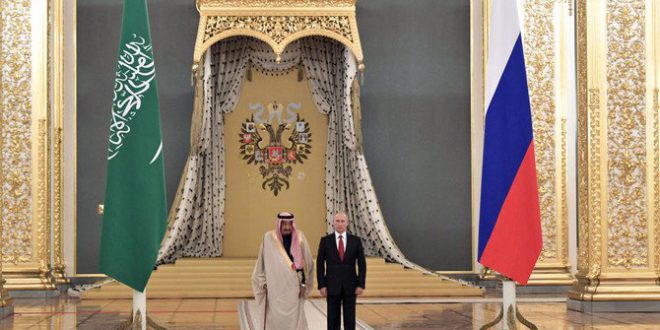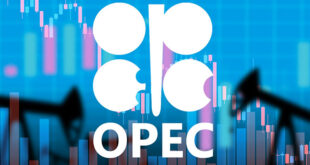Saudi Arabian and Russian oil market policy is set to dominate the Vienna OPEC meeting next week. The summit. to include Russia and other non-OPEC members known as “OPEC+“ will gather to review a production-cuts agreement. hammered out in 2016 — amid fears of a supply crunch. Output cuts have helped crude to rise from below $40 per barrel in early 2015 to $76 on June 15. But severe outages from crisis-hit Venezuela are also a major factor behind the rise in the price. according to the International Energy Agency. Richard Mallinson. chief geopolitical analyst at London-based Energy Aspects. told Arab News: “The Saudis and Russians have been talking extensively throughout this process about aligning their goals and achieving a long-term impact. The OPEC+ arrangement is not a short-term deal which expires (at the end of 2018) and then everyone goes their separate ways.“ On June 14. Saudi Arabia’s energy minister. Khalid Al-Falih. said it was “inevitable“ OPEC+ participants would vote to boost oil production gradually at next week’s meeting . Speaking to reporters in Moscow. Al-Falih said “as usual we will do the right thing … I think we’ll come to an agreement that satisfies most importantly the market.“ The deal leaders. Saudi Arabia and Russia. are said to have proposed plans for the group to add as much as 1 million barrels per day to production. When the time comes to unwind their accord. “they will do so in an orderly way as possible to maintain their influence on the market.“ said Mallinson. Carsten Fritsch. senior oil analyst at Germany’s Commerzbank. said the June meeting would probably see the signatories agree to comply at 100 percent. rather than current over-compliance at 170 percent. But that may not happen immediately as it remains to be seen how much Iranian crude will be lost following President Donald Trump’s decision to reimpose sanctions on Tehran last month. “I don’t see any reason to continue these production cuts at the current scale (the target was to reduce supply by 1.8 million barrels per day) into the new year.“ Fritsch told Arab News in a phone interview from Frankfurt. But there will be ongoing. joint-policy cooperation to avoid price and production spikes. he suggested. “What I see developing is ‘informal guidance.’ much like comments from the chairman of the US Federal Reserve with regard to interest rate policy. in order to try to anchor market expectations.“ said Fritsch. Looking at the Vienna meeting. he said the message would probably be that production increases would be gradual and depend on the extent of further losses from Venezuela and the magnitude of shortfalls from Iran. These wouldn’t become apparent until the end of the year. and so it was “impossible to predict production levels that will hold in 2019.“ he said. With prices spiking at $80 per barrel in May in the wake of President Donald Trump’s decision to terminate the nuclear deal with Iran and reimpose sanctions. “the world has woken up to the fact that oversupply is no longer an issue.“ and that there are looming fears of a supply squeeze. said Mallinson. “Some of us have been saying for quite a while that the overhang would disappear and we would come back into this sort of world … a supply crunch.“ he said. “What we are hearing is that there is no desire from OPEC and others to pre-empt the supply losses coming later this year. “Iranian exports will start falling soon. but only when the world feels the ‘actual’ loss. will the Saudis. Russians and others begin to ramp up production.“ said Mallinson. Shakil Begg. global head of oil research at Thomson Reuters. said the message from producers seemed to be that they still wanted to maintain some sort of coordinated agreement. “GCC countries are thinking about the need to replace lost Iranian barrels. They may maintain an output agreement. but the quotas for the individual countries could change.“ Begg said peak OECD inventories had been cut from around their 5-year average. at a level targeted by OPEC+ to get rid of the overhang built up between 2010-14. Those inventory figures. however. did not fully capture what was happening in Asia where there was quite a lot of crude that had been put into storage. “If you look at China. for example. they are refining a lot more crude than they actually need. so inventories are going up there.“ Begg said. OPEC+ is under pressure to manage market expectations. but will likely indicate at Vienna that its response will come later. when supplies tighten further. he said. As OPEC and Russia are producing significantly less oil than intended by the cuts agreement — and less than the market needs — thanks to production outages in Venezuela. observers agree that output could easily be expanded by Saudi Arabia. Russia. Kuwait and others.

 Iran Energy News Oil, Gas, Petrochemical and Energy Field Specialized Channel
Iran Energy News Oil, Gas, Petrochemical and Energy Field Specialized Channel



